Spring is on its way! Time to work in the garden! Or for some, the farm. This is a particularly exciting time. I love excuses to play in the dirt. I crave the smell of the Actinomycetes (don’t let the “-mycetes” fool you; these are bacteria, not fungi) at work in the soil. You know that certain smell of exceptional soil? Sure you do! And so the ultimate question comes, “To till? Or not to till?”
As you may or may not know, I am particularly partial to fungi. So I’m going to argue that you should not till, for the sake of the fungi…and so you can be more lazy!
Arbuscular mycorrhizal (AM) fungi penetrate a plant’s roots and extend into the soil in search of water and nutrients to exchange with the host plant for sugars. Another cool thing about AM fungi: they produce a chemical called glomalin, which is also referred to as “soil glue.” Glomalin, as you might have guessed, is sticky and contributes to holding together soil particles. This helps add texture to soils, which is important for aeration and moisture flow. And it turns out that AM fungi might be key components in agricultural systems that require less fertilizer.
(AM fungi growing from a plant root)
Drs. Mike Lehman, Shannon Osborne, and Wendy Taheri studied arbuscular mycorrhizal fungi in agricultural systems and suggested farmers consider partnering with these fungi in their recently published research supported by the USDA titled: “Fall Cover Crops Boost Soil Arbuscular Mycorrhizal Fungi Which Can Lead To Reduced Inputs.
Cover crops are plants that cover the dirt (who’d have thought?), reducing the evaporation of moisture from the soil and holding the soil in place, resisting erosion. Cover crops can be used as “green manure” by cutting the plants and letting them fall and compost in place. The cover crops often can be directly planted into the soil, rather than clearing the area first. This all helps provide a stable living environment for soil organisms. As the soil gains an infusion of life over time, the chemistry changes and different sorts of nutrients become available as worms, bacteria, insects, fungi and other life grow and die in the soil.
(an example of cover crops between annual greens)
But this new infusion of nutrients from this influx of life in the soil means nothing to a plant that cannot take in many of these nutrients. There can be a lot of phosphorous in the soil, but it has to be “fixed,” or “available,” in order for plants to uptake it. So it should be pretty clear how beneficial a partnership with fungi can be for some plants. These fungi can take in the phosphorous in the soil that is not available to plants and make it available to the plant. It’s quite an amazing relationship.
So what does this mean for the gardener or farmer? Well it means several important things. First of all, this means that if plants can develop these fungal relationships, they are likely to require less input. This means less fertilizer is needed, whether it be organic or chemical fertilizer. This translates to money saved! Another thing to consider is that too much phosphorous in the soil decreases the active arbuscular mycorrhizal fungi in the soil. Just another reason why it’s better to err on the side of too little, rather than too much.
Second, in order for these systems to develop in the soil, the soil cannot be repeatedly disturbed. This means no tilling, if possible. If the soil is not suitable for planting, rather than tilling, “fork” the land with a broad-fork to open the soil up a bit. Then apply some organic matter, usually in the form of compost. This can then be sheet mulched over and planted. Here is an example of sheet mulch, although they do not have to be this complex:
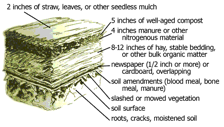 I also have to mention compost teas. Compost teas can be a way of inoculating soils with beneficial fungi and bacteria. Compost teas are made by literally making tea with compost while pumping air through the water in order to promote the life of beneficial aerobic bacteria.
I also have to mention compost teas. Compost teas can be a way of inoculating soils with beneficial fungi and bacteria. Compost teas are made by literally making tea with compost while pumping air through the water in order to promote the life of beneficial aerobic bacteria.
(brewing compost tea with aquarium air pumps and a 5 gallon bucket)
Spores often pass through to the tea from the compost. Spores can also be purchased and added to the tea (or to potting mixes if one is container gardening). Then the liquid is just sprayed onto the soil and plants in the area.
So, the moral of the story is: as this gardening/farming season gets going, consider partnering with your soils and optimizing the diversity of life in your soils, ultimately fostering those arbuscular mycorrhizal relationships, as well as many other bacterial and fungal relationships, and perhaps making the work of it all a little easier! Trust the biology and let it work for you!



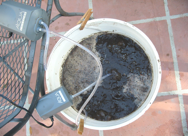
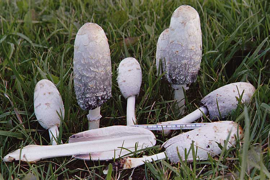
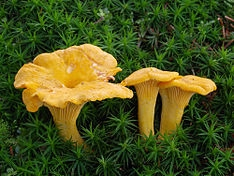
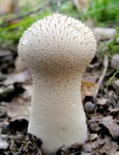
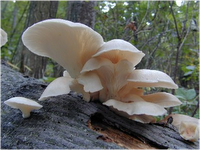
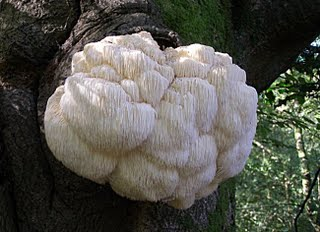
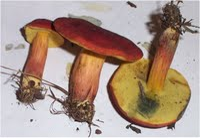
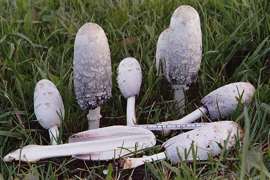 Shaggy Mane (Coprinus comatus)
Shaggy Mane (Coprinus comatus)